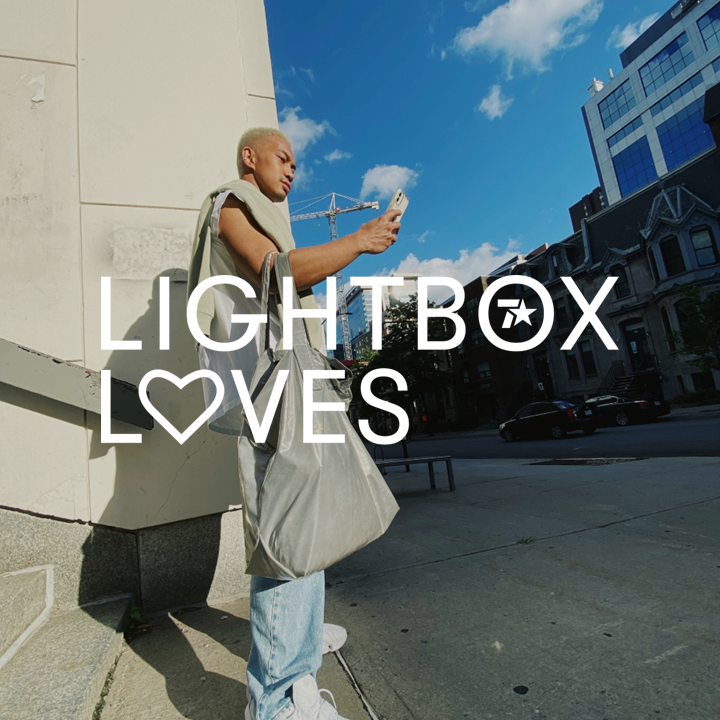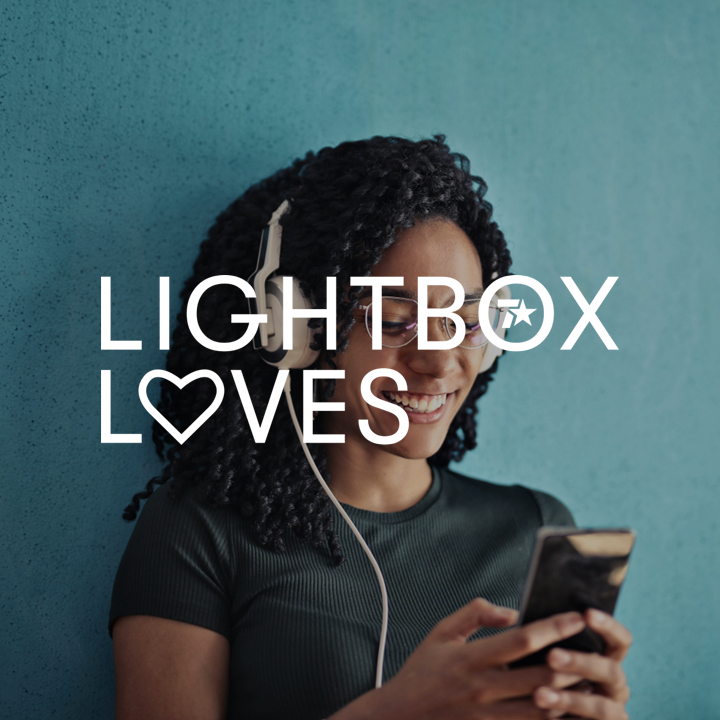
Gousto aims to make recipe boxes ‘the UK’s favourite way to eat dinner’
Recipe box subscription brand has made major investments in technology to help it deliver improved choice and delivery options, brand director says.
Gousto, the UK-based recipe box delivery service, is kicking off a £3m brand campaign, two months after securing a £30m cash injection that brand director Anna Greene said is helping the business scale its technology and transform its offer to consumers.
The push, “Give it some Gousto”, is the second ad createed by M&C Saatchi and with media agency the7stars, both of which were appointed last year.
It features a main brand TV spot, which will run for nine weeks from Sunday evening (1 September), supported by direct response TV ads and additional video created for social media, as well as partnerships with three brand ambassadors, Anna Whitehouse (Mother Pukka on social), Simon Hooper (Father of Daughters), and Joe Wicks (The Body Coach), who is also an investor in Gousto.
The campaign was created by Charli Plant and Laura Saraiva, and directed by Favourite Colour Black through Park Village.
Speaking to Campaign, Greene said that while Gousto had grown sales 70% in the last year – overtaking its chief competitor, Hello Fresh, in the process – and was now delivering 2.5 million meals a month, the first priority of the campaign was growing awareness and consideration, with three quarters of UK adults not yet aware of the brand, while “around half of the UK still don’t fully understand what a recipe box is”.
While this situation means there is still work to do to educate consumers on how recipe boxes work, Greene said Gousto’s growth meant that to maximise its potential, it now needed to be able to communicate its promised emotional benefits: cutting out the pain and hassle of shopping and planning meals, and reacquainting people with the joys of cooking.
“This year we really wanted to take it up a notch,” Greene said, describing the thinking behind the campaign. “We wanted to demonstrate how we can improve everything from top to bottom. We’re on a mission to be the UK’s most loved way of eating dinner.”
The creative, which uses visual motifs related to cooking such as chopping with a knife to move between shots, was intended to be visually arresting, but also was “quite a disruptive and destructive device to contrast between old and new,” Greene said.
The booming recipe boxes sector is packed with competitors – along with Berlin-based HelloFresh, which in 2017 topped the Financial Times ranking of Europe’s fastest-growing companies, there are several with a more targeted approach, such as the gluten and dairy-free, low carb Mindful Chef; fresh pasta specialist Pasta Evangelists; and Simply Cook, which leaves out the fresh ingredients but comes in a package that fits through a letterbox.
Gousto lacks a key identifying characteristic of this sort, but stands out because of its superior technology, Greened claimed. This had allowed it to offer 50 recipes to choose from each week, double the number offered by Hello Fresh, to bring prices down, and to offer delivery seven days a week at a wider range of timeslots.
The big challenge for Gousto, and the sector as a whole, is that most people’s usual shopping, cooking and eating habits are very well established, Greene said.
“We recognise it’s a huge behaviour change we’re trying to create here. People are so used to shopping in supermarkets or online, there’s years of entrenched behaviours.” This means Gousto needs to “give them really compelling reasons and motivating them to give it a try – that’s a more powerful way to look at the sector”.

In an age where social media is the most popular commercial media channel for 16-34s, brands are faced with the question of how best to utilise this virtual shop window. Working with content creators themselves and ‘Insta celebs’ seems the obvious solution; however online influencing takes many shapes and sizes and will become even more difficult to navigate as Instagram introduces hidden likes. With the disappearance of familiar visible metrics, there may be an uncertainty over the tangible reach and engagement that individual influencers can offer.
Lia Haberman, formerly VP Audience Development at Livestrong, predicts “this will likely increase the amount of ads as brands look for more exposure and make it difficult for anyone but established influencers to get a foot-hold.” Brands that have worked with Mrs Hinch, the UK’s biggest ‘cleanfluencer’ with over 2.5 million followers, attribute significant results to this macro influencer; Unilever claims that the sales of Cif Stainless Steel have grown by two thirds following Mrs Hinch’s backing.
Some influencers have such large followings that they don’t need to associate themselves with other brands, but instead can sell their own products to a ready-made audience. As a result of the online following she has built, influencer Grace Beverley, has been able to extend her own personal brand out into not one, but two companies (TALA sustainable activewear and B_ND vegan gym equipment).
From seeing these results, it comes as no surprise that consumers are more open to being sold products by their favourite personalities. Our quarterly proprietary tracker, the QT, revealed that 62% of 18-24s prefer product placement over traditional ads, with 24% even enjoying social influencers’ recommendations. Although it seems there is a mediator: authenticity. The absence of which prevents transfer of trust for influencer to brand. Perhaps this is where the micro influencer (someone with a 10k to 100k following) shines – working on partnerships with brands who can benefit from this intimacy that accompanies a loyal following of friends and family. The likes of Glossier have grown their brands in this way.
For influencers, it is important to pick partners with which they genuinely identify, to keep their relationship with followers authentic. For brands, it is a question of which growth strategy is best for them: mass exposure from association with a big name or loyal customers from an influencer with a smaller, yet potentially more engaged, audience.
(1) https://ipa.co.uk/media/7936/touchpoints_facebookreport_2018-digital.pdf
(2) https://later.com/blog/hidden-likes-instagram/
(3) The rise of micro-influencers and why they are important, WARC February 2019
(4) https://www.thegrocer.co.uk/trend-reports/mrs-hinch-how-cleanfluencers-are-transforming-household-/592609.article

It’s safe to say that Brits have had an eventful Summer. July saw the hottest temperature on record, a controversial new Prime Minister entered number 10 and it was also an exciting season for sports fans. As the autumn quickly approaches, we partnered with our friends at mobile research panel OnePulse to ask Brits how they feel now they’re faced with the reality of colder weather and shorter days.
What is clear is that how you frame the question is crucial to the response. Brits are sadder about the end of the summer than the idea of autumn coming. It’s the finality of the season change, rather than the season itself with which they’ve taken their umbrage.
One group for whom autumn couldn’t come quick enough is parents. A quarter of parents with primary school age children feel exhausted after the summer, and its particularly mums feeling the brunt. The same proportion treat September as the start of a new year, and see it as an opportunity to get some much-needed life admin done.
They’re not alone in this. The 16-24 group are the cohort most likely to make big life choices in September, with 29% saying they do so, and 23% saying actively treat it like a new year. With the ‘back to school’ mentality still fresh in their minds, it’s no surprise. But what are Brits trying to achieve?
Finance is Brits’ number one priority for September, with 47% of those asked saying they are looking to save some money this month. This is followed by weight loss ambitions, and giving their home a (counterintuitive) spring clean, at 35% each.
For older Brits, perhaps enjoying the kids or grandkids finally being out of the house, it’s a welcome opportunity to flex their DIY muscles, and 39% of this group are taking September as their opportunity to improve their home.
For parents, it could be about motivating them to do what they’ve been putting off as exhaustion fades, like spring cleaning or DIY. For those without children, it could be about starting the new year as they mean to go on; reinventing their careers or simply having more date nights.
Parent or not, it is clear that September is about getting back to reality and the desire to get some ‘me-time’ back shouldn’t be ignored.
There’s so much more to the autumn than ‘Back to School,’ and it’s clear that Brits have a new energy about them, ready to re-set for the coming season. Brands should see this as an opportunity to celebrate self-indulgence, and encourage us to celebrate ourselves!

Everyone is listening to podcasts. Well, not quite everyone, but the latest RAJAR data revealed that 12% of UK adults listen to a podcast weekly. While this figure may not initially appear particularly high, when contextualised it reveals there has been a dramatic growth in podcast popularity. This 12% represents approximately 6.5 million adults, a twofold increase on the 3.2 million who were listening back in 2013.
This boom has been recognised by the podcast producers, too, with Spotify recently announcing that it would be investing up to $500m in the production of their top podcasts. These figures suggest that the upwards trend in podcast popularity is set to continue, therefore opening up an exciting new avenue for advertisers to reach their audiences.
One of the most important reasons as to why podcasts can become a vital media for advertisers is the age demographic most connected with podcasts. The growth of podcasts appears to have been driven by young listeners, with 16% of 15-24 year-olds and 21% of 25-34 year-olds saying they are weekly podcast listeners. Considering how challenging it can be to engage with a younger audience, this represents one medium through which 16-34 year-olds can be consistently reached.
Further, the nature of podcast listening means the listener is fully immersed in the content they are listening to. Whether it’s when travelling, relaxing or exercising, 90% of listeners said they listen to podcasts on their own, with two-thirds of respondents saying they always listen to the entirety of the episode. This sense of immersion in the podcast experience can be seen as similar to being in a cinema, and again allows advertisers to reach an audience in an environment where they are unlikely to skip forward through the podcast.
So, as Monday 30th September is International Podcast Day, it’s time to find a good podcast and start thinking about how their inclusion in media plans can really help advertisers engage their target audiences through an increasingly popular media.
RAJAR MIDAS Audio Survey (Winter 2018) https://www.rajar.co.uk/docs/news/MIDAS_Winter_2018.pdf?utm_source=podnews.net&utm_medium=web&utm_campaign=podnews.net:2019-01-21
OFCOM: Podcast Listening Boom in the UK (2018) https://www.ofcom.org.uk/about-ofcom/latest/media/media-releases/2018/uk-podcast-listening-booms
The Guardian: “Podcasting’s Netflix moment: the global battle for domination” https://www.theguardian.com/media/2019/mar/30/podcastings-netflix-moment-the-global-battle-for-domination

Many of us will be familiar with the satisfaction of watching the daily step count rack up on our smartphones and smart devices. Our obsession with tracking fitness data has grown in the past few years, with over a third of British adults now interested in using fitness tracking apps (and two thirds of Millennials).1 What’s with the sudden surge in interest?
Several factors are driving the popularity of fitness tracking apps – they are cheaper than a gym, they help hold us accountable to goals we’ve set and quantify our progress. However the key appears to lie in the social aspect of these apps. A 2017 study found that receiving social feedback encourages users to increase their interaction on a platform.2 Strava is a prime example of how this is driving people to fitness apps; people are eight times more likely to receive feedback (in the form of ‘kudos’) on their Strava activities than they are on Twitter, keeping them coming back for more.
Strava’s CEO, James Quarles, (a former employee of Instagram and Facebook) has recognised the importance of social interactions in driving new users to the app and has been harnessing this since he joined in 2017. He re-oriented the app around its social feed with a new feature called ‘Athletes Posts’, allowing people to share photos, stories, race reports or questions. This encourages people to check their feed for friends’ updates multiple times a day, similar to how they would with Instagram. The strategy appears to be working for Strava, now with 46 million global users and another million joining every month.3
It’s not just runners and cyclists who are migrating their hobbies from real-world to digital communities. Enter Wattpad, dubbed the ‘Instagram for writers’. The social writing platform allows amateur authors to create, share and like original stories, reading lists and personal profiles with other writers.
Will the growth of these and other niche social networks ever be enough to rival the likes of Facebook or Instagram? Perhaps not, but brands should take note of the changing way that consumers are engaging with their passion points; getting involved in an interest group is not just about joining a few others in a closed-doors discussion, but about partaking in performative and competitive global networks.
1 ‘Prediction: who will use gamified exercise apps by 2025?’, Foresight Factory, July 2019 [Available at https://ffonline.foresightfactory.co/content/prediction-who-will-use-gamified-exercise-apps-by-2025?search=372158]
2 Lindsey, Joe, ‘Why Strava Is Getting More Social Than Ever’, Outside Online, June 2019 [Available at https://www.outsideonline.com/2395489/strava-james-quarles].
3 ‘The Why Factor’, BBC, January 2019 [Available at https://www.bbc.co.uk/sounds/play/w3cswrl5]

Touchpoints was launched by the IPA in 2005, with its primary function being to provide the media world with more cross-platform and cross-data media planning data sets.
Respondents are asked to keep a diary detailing their media habits, and also complete an online questionnaire detailing their attitudes, shopping and media habits.
As a result Touchpoints allows advertisers to map the media landscape much like a GPS – and reveals the opportunities that can arise from the integration of different media channels in campaigns.
The IPA and Facebook have now undertaken a joint venture to investigate how the media landscape looks today.
Fourteen years after the first survey, this research has revealed that there is now no single media channel that will allow advertisers to reach 90% of GB adults in a week, further highlighting today’s fragmented media landscape – and illustrating the importance of combined planning tools such as Touchpoints.
Commercial TV continues to reign as the largest channel when it comes to reach and time spent with the medium. This is followed by social media and the internet; unchanged from the last research conducted by the IPA in 2015.
However, we see interesting results when we look at these channels more closely. The amount of time spent on social media has gained six percentage points since 2015 (now at 24%) while commercial TV lost six points in the other direction (now 34%).
As media consumption shifts, brands should consider accessing a greater range of channels in their mix in order to reach their target audience.
Advertisers that have historically focused on a single channel – such as those heavily reliant on TV – are increasingly having to revaluate their media plans in order to make for more impactful campaigns.
It is often said that just one spot in Coronation Street in 1970 will have reached 30 million people. Nowadays, short-term campaigns looking to drive sales, or launch campaigns hoping to provide immediate impact, may no longer find it sufficient to utilise singular channels which in the past had been chosen for their ability to reach a huge proportion of a target audience with just one spot, or with a short burst of activity.
For now TV remains the largest media channel for all adult reach, but the generational shifts we’re already seeing may reveal what the future holds.
According to the earliest Touchpoints data, TV viewing habits of 15-34-year olds and the 55+ age group were not dramatically different. However in the last four years we have seen more and more young people favour subscription VOD (SVOD). Now only 77% of 15-34-year olds watch live TV each week, a significant decline from the 82% reported in 2015.
Ultimately, shifting media consumption adds another layer of complexity to media planning. Advertisers will need to consider a wider channel mix, but also be more creative in their approach, if they hope to reach a broad audience in their campaign. Tools such as Touchpoints more useful now than ever before.

Cinema has been revealed as the second fastest-growing medium this year, according to WARC’s latest Global Ad Trends report released this month.
While the internet remains the fastest growing channel, the global cinema market has grown 6.8% year-on-year; as a result, it is now worth a total of $4.6 billion.
The report follows DCM’s record-breaking first half of the year; the company, which controls 82% of the UK’s cinema industry, recently reported a 12% increase in ad spend compared to the same period in 2018.
The growth of cinema is in part due to the quality of content being released. 2019 has so far seen a strong slate of films, with blockbuster Avengers: Endgame grossing £89m at the UK box office, followed by several big-budget Disney re-makes including The Lion King and Aladdin, as well as franchise film Spider-Man and the recent return of Tarantino with Once Upon a Time in Hollywood.
Advertisers are being attracted to the medium because it provides a captive audience – something that is becoming increasingly difficult to find elsewhere.
As “second-screening” becomes the default viewing behaviour for most forms of video, cinema provides a much sought after high-attention environment, allowing advertisers to show quality content to these highly engaged viewers.
With some reports suggesting attention spans are becoming ever shorter, particularly among the younger generations, the level of immersion provided by cinema could become even more pertinent.
In fact, cinema is a particularly key channel for accessing those hard-to-reach younger audiences. Indeed, research released by DCM, alongside Differentology towards the end of last year found that cinema was the medium the 16-34 audience felt most positively about.
For this reason DCM CEO Karen Stacey has this month described cinema as being “complementary” to TV because of its ability to “plug the gap” left by the declining viewership of TV by these audiences.
While it has previously been largely the remit of launch campaigns or bigger-budget marketing activity, brands are increasingly beginning to understand the role cinema can play in any form of brand-building activity – as well as short-term activations, or even targeted, location-based campaigns.
In an increasingly fragmented video landscape, cinema should be considered not as a special feature, but as part of an integrated video strategy. And with huge franchise films including the likes of Star Wars: The Rise of Skywalker and Frozen II still to come this year, cinema may be about to steal the show.




Recent Comments